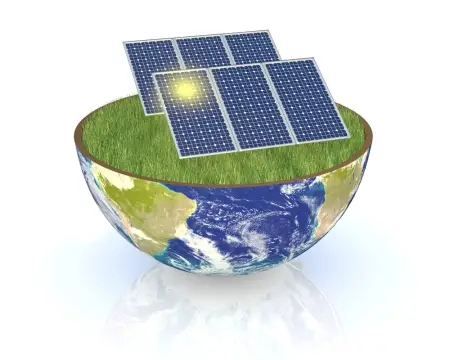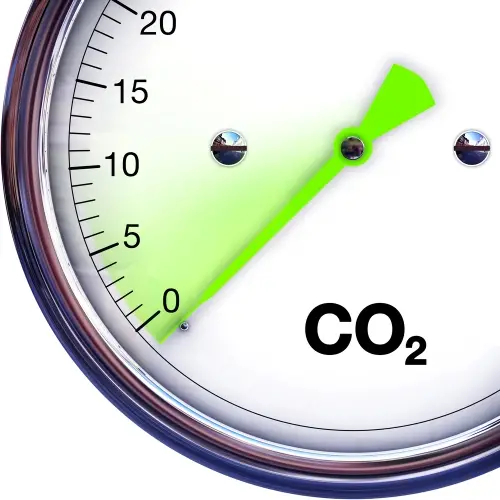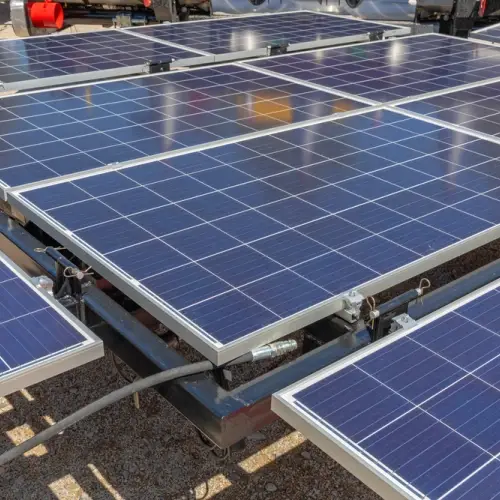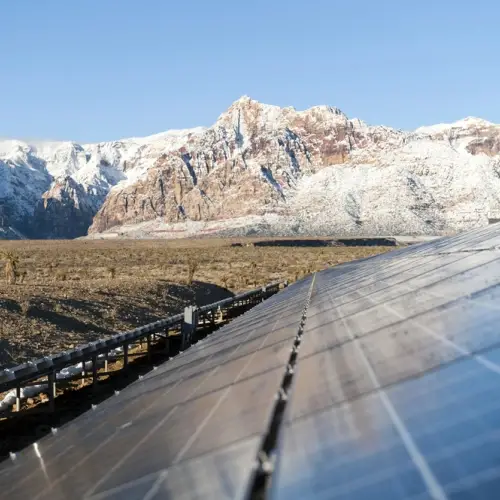
Solar energy is a renewable energy source obtained from solar radiation. It uses solar panels to convert sunlight into electricity or heat. This form of energy has a different environmental impact than conventional energy sources such as coal or oil.
It is important to understand both the positive and negative aspects to have a complete view of your impact on the environment.
Positive impacts
Reduction of CO2 emissions
 One of the main environmental benefits of solar energy is that it produces electricity without emitting greenhouse gases during operation. Greenhouse gases, such as carbon dioxide (CO2), contribute to climate change by trapping heat in the atmosphere.
One of the main environmental benefits of solar energy is that it produces electricity without emitting greenhouse gases during operation. Greenhouse gases, such as carbon dioxide (CO2), contribute to climate change by trapping heat in the atmosphere.
By not burning fossil fuels, solar energy helps reduce the amount of these gases in the atmosphere, which contributes to mitigating climate change.
According to the International Renewable Energy Agency (IRENA), accelerated deployment of solar photovoltaics (PV) could reduce CO2 emissions by about 4.9 gigatonnes annually by 2050 ( IRENA )
Furthermore, IRENA reports that solar power has already reduced CO2 emissions by up to 300 million tonnes per year, and this number could increase to three gigatonnes per year by 2030 ( IRENA ).
Reducing air pollution
By replacing fossil fuels, solar energy contributes to a significant reduction in air pollution. Solar energy does not pollute the air with other harmful pollutants such as sulfur dioxide (SO2) and nitrogen oxides (NOx), which are common in the burning of fossil fuels and can cause respiratory problems and other health conditions in humans.
The European Commission reports that renewable energy, including solar, could prevent up to 3 million premature deaths per year caused by air pollution by 2050. More information on this topic is available from the European Commission .
Negative impacts
Despite these benefits, solar energy also has some negative environmental impacts that need to be considered. Manufacturing solar panels requires the use of various materials and industrial processes that can be harmful to the environment.
Silicon mining and manufacturing
 For example, the mining of silicon, the main component of most solar panels, can cause soil degradation and water pollution if not managed properly.
For example, the mining of silicon, the main component of most solar panels, can cause soil degradation and water pollution if not managed properly.
In addition, solar panel production involves the use of toxic chemicals that, if not managed properly, can pollute the air and water.
A report by the Electric Power Research Institute (EPRI) notes that solar panel production generates a moderate amount of hazardous waste, although considerably less than energy production from fossil fuels.
Land use
Another aspect to consider is the impact of land use. Large solar installations, such as industrial-scale solar plants, require large areas of land. This can lead to the loss of natural habitats and affect local biodiversity.
Alternativas
However, there are ways to mitigate these impacts. For example, solar panels can be installed on the roofs of existing buildings and other structures, reducing the need to use new land areas. Solar projects can also be developed on degraded or unsuitable land for agriculture, minimizing the impact on natural ecosystems.
Impact on wildlife
 In some cases, solar projects are built in desert areas that appear devoid of life, but are actually home to fragile ecosystems that can be negatively impacted by solar infrastructure development.
In some cases, solar projects are built in desert areas that appear devoid of life, but are actually home to fragile ecosystems that can be negatively impacted by solar infrastructure development.
A study published in Nature Ecology & Evolution examines how rapidly changing rates and directions in which species must move to adapt to climate change. Rapid deployment of solar farms reduces temperature rates to near zero in areas of high terrestrial biodiversity, while abrupt termination dramatically increases these rates, rapidly fragmenting biomes such as grasslands and temperate forests, increasing threats to biodiversity.
Additionally, solar panels can cause the "lake effect," which tricks waterfowl into thinking that reflective surfaces are bodies of water, potentially resulting in accidents.
Shelf life and recycling
The question of what to do with solar panels at the end of their life is also important. Solar panels have a lifespan of about 25-30 years, after which they need to be replaced.
Recycling these panels is essential to prevent them from becoming hazardous waste. Today, recycling technologies for solar panels are improving, and methods are being developed to recover the valuable materials they contain, such as silicon, silver and aluminum.
The European Union has implemented regulations requiring that 85% of solar panel materials be recycled.
Impact on water resources
In terms of water resources, solar energy has advantages and disadvantages.
Unlike thermal power plants that require large amounts of water for cooling, solar PV installations do not require water to generate electricity. This is beneficial in areas where water is a scarce resource.
However, the production of solar panels and their periodic cleaning can require water, although in much smaller quantities than traditional power plants.
A U.S. Department of Energy study estimates that concentrated solar plants, a solar technology that uses mirrors to concentrate sunlight, use between 300 and 800 gallons of water per megawatt-hour, compared with 20,000 gallons used by coal plants.
Conclusion
In conclusion, solar energy presents a cleaner and more sustainable option compared to conventional energy sources.
It does not emit greenhouse gases during operation and has less negative impact on air quality and human health.
However, it is not without environmental challenges, such as waste management, the use of natural resources in its manufacture and the impact on land use. With careful planning and advanced technologies, it is possible to minimize these impacts and take full advantage of the benefits of solar energy.